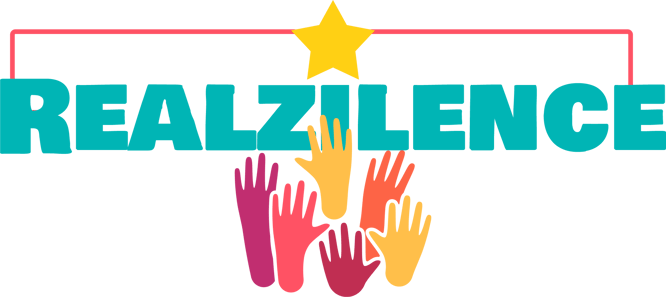The 7 Most Important Reasons Why a Public School District Needs to Train All Their Principals and School Administrators on Implementing Servant Leadership into Their Schools
Discover why Servant Leadership is essential for public school principals and administrators. Learn how this leadership approach improves collaboration, equity, student outcomes, and school culture.
4 min read


In the ever-evolving landscape of education, the role of school leaders has never been more critical. Principals and school administrators are not just managers of buildings and budgets; they are the stewards of their students' futures, the mentors of their teachers, and the bridge between the community and the classroom. In this context, the concept of Servant Leadership has emerged as a transformative approach that can redefine the way schools operate and thrive.
Servant Leadership, a philosophy coined by Robert K. Greenleaf in the 1970s, flips the traditional leadership model on its head. Instead of leaders focusing on their own power and authority, Servant Leaders prioritize the needs of others—empowering, supporting, and uplifting those they serve. For public school districts, training principals and administrators in Servant Leadership is not just a nice-to-have; it’s a must. Here are the seven most important reasons why:
1. Fostering a Culture of Collaboration and Trust
One of the hallmarks of Servant Leadership is its emphasis on building trust and fostering collaboration. In a school setting, this means creating an environment where teachers, staff, students, and parents feel valued and heard. When principals and administrators lead with humility and empathy, they set the tone for a culture of mutual respect and open communication.
For example, a Servant Leader principal might hold regular forums where teachers can voice their concerns or ideas without fear of judgment. This collaborative approach not only improves morale but also leads to more innovative solutions to challenges, as everyone feels invested in the school’s success.
2. Empowering Teachers and Staff
Teachers are the backbone of any school, yet they often feel overworked, underappreciated, and micromanaged. Servant Leadership shifts this dynamic by empowering educators to take ownership of their classrooms and professional growth.
When principals act as Servant Leaders, they focus on removing obstacles that hinder teachers’ effectiveness, whether it’s providing resources, offering professional development opportunities, or simply listening to their needs. Empowered teachers are more motivated, creative, and committed to their students’ success, which ultimately leads to better educational outcomes.
3. Improving Student Outcomes
At the heart of Servant Leadership is a commitment to serving others, and in a school, the primary "others" are the students. When principals and administrators prioritize the needs of their students, they create a learning environment that is nurturing, inclusive, and focused on growth.
Servant Leaders in education often go beyond test scores and metrics, focusing on the holistic development of each child. They might implement programs that address social-emotional learning, mental health, or equity issues, ensuring that every student has the opportunity to succeed. By putting students first, Servant Leaders help create a school culture where learning thrives.
4. Building Stronger Community Relationships
Schools do not exist in a vacuum; they are deeply interconnected with the communities they serve. Servant Leadership emphasizes the importance of building strong, authentic relationships with parents, local organizations, and other stakeholders.
A Servant Leader principal might host community events, create partnerships with local businesses, or establish open-door policies for parents. By actively engaging with the community, schools can gain valuable support and resources, while also ensuring that their programs and policies align with the needs and values of the people they serve.
5. Promoting Equity and Inclusion
In today’s diverse and often divided world, equity and inclusion are more important than ever. Servant Leadership naturally aligns with these values, as it requires leaders to listen to and advocate for those who are marginalized or underserved.
By training principals and administrators in Servant Leadership, school districts can ensure that their leaders are equipped to address issues of bias, discrimination, and inequality. Servant Leaders actively seek out and amplify the voices of those who are often overlooked, creating a more just and inclusive school environment for all.
6. Enhancing Leadership Sustainability
Traditional leadership models often rely on top-down authority, which can lead to burnout, turnover, and a lack of continuity. Servant Leadership, on the other hand, is inherently sustainable because it focuses on developing the leadership potential of others.
When principals and administrators practice Servant Leadership, they create a pipeline of future leaders by mentoring and empowering their staff. This not only ensures a smoother transition when leadership changes occur but also builds a stronger, more resilient school community.
7. Modeling Ethical and Moral Leadership
In a world where ethical leadership is increasingly rare, schools have a unique opportunity to model what it means to lead with integrity and compassion. Servant Leadership is rooted in ethical principles, such as humility, empathy, and a commitment to the greater good.
When principals and administrators embody these values, they set a powerful example for their students, teachers, and the broader community. They demonstrate that leadership is not about power or prestige but about service and responsibility. This ethical foundation can have a ripple effect, inspiring others to lead with similar values in their own lives.
Conclusion: A Call to Action for Public School Districts
The challenges facing public schools today are immense, from budget constraints and teacher shortages to the ongoing impacts of the COVID-19 pandemic. In this context, the need for effective, compassionate leadership has never been greater. By training principals and administrators in Servant Leadership, school districts can equip their leaders with the tools they need to navigate these challenges and create schools that are not just functional but truly transformative.
Servant Leadership is more than just a leadership style; it’s a mindset, a way of being that prioritizes the well-being and success of others. When this philosophy is embraced by school leaders, the benefits are profound: stronger relationships, empowered teachers, improved student outcomes, and a more equitable and inclusive school culture.
For public school districts, the choice is clear. Investing in Servant Leadership training for principals and administrators is not just an investment in their leaders—it’s an investment in their students, their communities, and the future of education itself. The time to act is now. Let’s empower our school leaders to serve, so that they, in turn, can empower others to thrive.
Learn more about how you can train your school leaders on Servant Leadership through our 12-Week Servant Leadership Program.
Realzilence
Empowering education through resilient leadership solutions.
© 2024-2025. All rights reserved. Reno Web Design.
